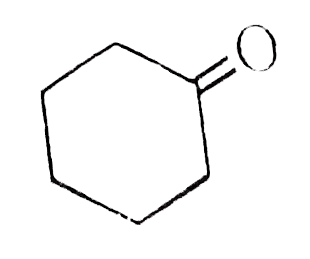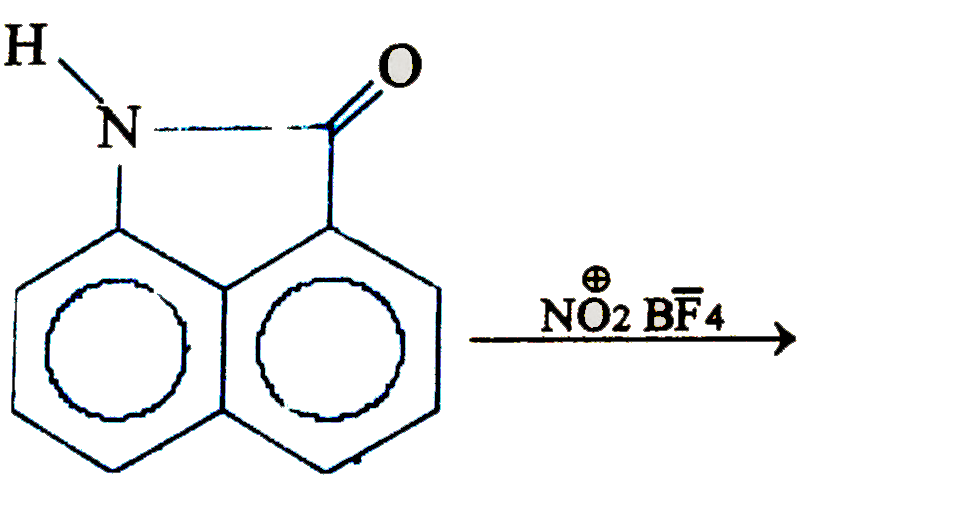The electrophilic substitutions reactions of benzene takes place via
(i) generation of electrophile
(ii) generation of nucleophile
(iii) formation of carbocation intermediate
(iv) removal of proton from the carbocation inter mediate
I, iii and iv
ii, iii and iv
I and iv
ii and iv
The correct Answer is:A
According to experimental evidences, electrophilic substitution reactions are supposed to proceed via the following three steps:
(1) Generation of the electrophilc
(2) Formation of carbocartion intermediate
(3) Removal of proton from the carbocation intermediate
Topper's Solved these Questions
Similar Questions
Alkenes undergo electrophilic addition reactions. Electrophilic addition to unsymmetrical alkenes involve the formation of a more stable carbocation intermediate in the first step which is rate determining and carbocation is then attacked by a nuclephile to form product
Which one of the following alkene reacts most readily with HCI?
View SolutionAlkenes undergo electrophilic addition reactions. Electrophilic addition to unsymmetrical alkenes involve the formation of a more stable carbocation intermediate in the first step which is rate determining and carbocation is then attacked by a nuclephile to form product
 +H2OH2SO4−−−→ Product
+H2OH2SO4−−−→ Product
View Solution
Knowledge Check
Alkenes undergo electrophilic addition reactions. Electrophilic addition to unsymmetrical alkenes involve the formation of a more stable carbocation intermediate in the first step which is rate determining and carbocation is then attacked by a nuclephile to form product
 +H2OH2SO4−−−→ ProductAThe major product is
+H2OH2SO4−−−→ ProductAThe major product is BThe major product is
BThe major product is CMajor product give +ve Tollen's testDMajor product give +ve iodoform test
CMajor product give +ve Tollen's testDMajor product give +ve iodoform testAlkenes undergo electrophilic addition reactions. Electrophilic addition to unsymmetrical alkenes involve the formation of a more stable carbocation intermediate in the first step which is rate determining and carbocation is then attacked by a nuclephile to form product
Which one of the following alkene reacts most readily with HCI?ACH2=CH−ClBCH2=CH−O−CH3CCH3−CH=CH−CH3D
Alkenes undergo electrophilic addition reactions. Electrophilic addition to unsymmetrical alkenes involve the formation of a more stable carbocation intermediate in the first step which is rate determining and carbocation is then attacked by a nuclephile to form product
HO−CH2−CH2−CH2−CH=CH2I2−−−−−→NaHCO3 major product formed isA B
B CHO−CH2−CH2−ClIH−CIlH2DCH2=CH−CH2−CH2−CHO
CHO−CH2−CH2−ClIH−CIlH2DCH2=CH−CH2−CH2−CHO
Alkenes undergo electrophilic addition reactions. Electrophilic addition to unsymmetrical alkenes involve the formation of a more stable carbocation intermediate in the first step which is rate determining and carbocation is then attacked by a nuclephile to form product
HO−CH2−CH2−CH2−CH=CH2I2−−−−−→NaHCO3 major product formed is
View SolutionIf aromatic ring is substituted by more than one group then electrophilic aromatic substitution reaction take place according to more activating group. The group which donates electrons to aromatic ring knwn as activating group and which withdraw electrons from the ring is called electron withdrawing group. generally all lectron releasing groups activates benzene ring towards electrophilic substitution and electron withdrawing groups deactivates ring towards electrophilic substitutions.
Q. Find out major product of following reaction
View SolutionIf aromatic ring is substituted by more than one group then electrophilic aromatic substitution reaction take place according to more activating group. The group which donates electrons to aromatic ring knwn as activating group and which withdraw electrons from the ring is called electron withdrawing group. generally all lectron releasing groups activates benzene ring towards electrophilic substitution and electron withdrawing groups deactivates ring towards electrophilic substitutions.
Q. Major product formation takes place at which position when the following is subjected for E⊕ substitution

View Solution2, 2-dimethyl-1-chloropropane undergo nucleophilic substitution reaction to produce an optically inactive product which of the following is correct regarding the product ?
(i) Formation of product takes place through SN1 reaction.
(ii) The product is optically inactive due to internal compensation.
(iii) The product is optically inactive due to external compensation.
(iv) The carbocation is not an intermediate in the given reaction.
Choose the correct option.
View SolutionWhich of the following alkyl halide undergoes a nucleophilic substitution reaction via formation of a carbocation ?
View Solution
